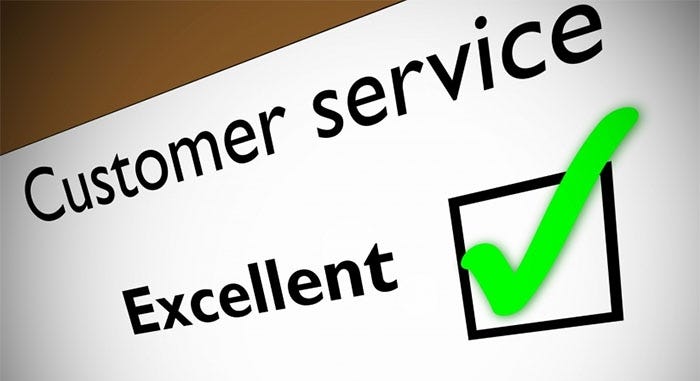Introduction
Ecommerce has become an essential part of the retail industry, with more and more businesses moving their operations online. However, simply having an ecommerce website is not enough to succeed in the digital world. To truly stand out and drive sales, businesses need to develop a comprehensive ecommerce strategy.
In this post, we will see why ecommerce strategy is important and how it can help businesses improve customer experiences and drive sales. Whether you’re a new ecommerce business or an established retailer looking to improve your online presence, this post will provide you with valuable insights and actionable tips to help you in the cutthroat world of ecommerce to succeed.
Optimize your website design

Why website design is important for ecommerce businesses
The design of your ecommerce website can have a significant impact on your customers’ experience and ultimately, your sales. A well-designed website can create a positive impression, improve navigation, and make it easier for customers to find what they’re looking for. On the other hand, a poorly designed website can frustrate customers, make it difficult to find products and discourage them from making a purchase.
Key design elements to focus on for ecommerce websites
When designing your ecommerce website, there are several key elements to focus on:
- Clear and easy-to-use navigation: Your website’s navigation should be clear, intuitive, and easy to use. Consumers should be able to easily locate what they are seeking.
- High-quality product images: Your website should feature high-quality product images that show your products in the best possible light. It will help customers compare products and services so they can make the best choice for their needs.
- Simple and streamlined checkout process: Your checkout process should be simple, streamlined, and easy to complete. Customers should be able to quickly and easily find the information they need to complete their purchase.
- Mobile responsiveness: With more and more customers shopping on mobile devices, your website must be mobile-responsive and optimized for mobile devices.
How to improve your website design to drive sales
To improve your website design and drive sales, consider the following tips:
- Conduct user testing: Conduct user testing to identify areas of your website that are confusing or difficult to use. Use this feedback to make improvements and optimize your website’s design.
- Optimize your product pages: Your product pages should be visually appealing and provide customers with all the information they need to make a purchase. Consider using high-quality images, detailed product descriptions, and customer reviews to improve your product pages.
- Use clear calls-to-action: Use clear calls-to-action throughout your website to encourage customers to take the next step in the purchasing process.
- Optimize your website for speed: Your website should load quickly to avoid frustrating customers and encourage them to stay on your website.
By focusing on your website design and making improvements to key elements, you can create a positive user experience, improve navigation, and ultimately drive sales to increase revenue for your ecommerce business
Leverage social media

Why is social media vital for ecommerce?
Social media is a powerful tool that ecommerce businesses can use to reach a wider audience, build relationships with customers, and drive sales. Social media can help businesses connect with customers, build brand awareness, and increase sales. It also provides a unique opportunity for businesses to build brand awareness and establish a strong online presence.
Key social media platforms to focus on for ecommerce businesses
When it comes to social media, there are several key platforms that ecommerce businesses should focus on:
- Facebook: With over 2.98 billion active users, Facebook is one of the most popular social media platforms. It’s a great platform for businesses to connect with customers, build brand awareness, and drive sales.
- Instagram: Instagram is a highly visual platform that’s perfect for showcasing products and building brand awareness. With over 2.35 billion active users, it’s a great platform for ecommerce businesses looking to reach a younger demographic.
- Twitter: Twitter is a great platform for businesses to engage with customers, provide customer support, and share updates about new products or promotions.
- Pinterest: Pinterest is a highly visual platform that’s perfect for ecommerce businesses selling products in industries such as fashion, beauty, or home decor.
How to leverage social media to drive sales and improve customer engagement
To leverage social media and drive sales for your ecommerce business, consider the following tips:
- Create valuable content that’s relevant to your audience and provides them with useful information. For example, blog posts, videos, or infographics.
- Connect with your audience by responding to their feedback, and by showcasing their creations.
- Running promotions or contests on social media is a great way to drive engagement and encourage customers to make a purchase.
- Social media marketing can be a powerful tool for driving sales and reaching a wider audience. With a well-targeted paid social media campaign, you can reach your ideal customers and drive them to your website or landing page.
By leveraging social media and focusing on key platforms, ecommerce businesses can reach a wider audience, engage with customers, and ultimately drive sales and improve customer engagement.
Offer free shipping

Why free shipping is important for ecommerce businesses
Free shipping has become an expectation for many online shoppers, with studies showing that high shipping costs are often the main reason for cart abandonment. Offering free shipping can be a powerful incentive for customers to make a purchase and can help ecommerce businesses stand out in a competitive market.
Read also: The Essential Guide to Growing Your E-commerce Business
The advantages of free shipping
Offering free shipping to customers can provide several benefits for ecommerce businesses, including:
- Increased sales: Offering free shipping can encourage customers to make a purchase and can help reduce cart abandonment rates, ultimately leading to increased sales.
- Improved customer loyalty: By offering free shipping, ecommerce businesses can improve customer satisfaction and loyalty, leading to repeat purchases and positive word-of-mouth.
- Competitive advantage: In a competitive market, offering free shipping can help ecommerce businesses stand out and attract new customers.
How to provide free shipping without neglecting your profits
Offering free shipping can be a significant expense for ecommerce businesses, but there are several strategies that businesses can use to offer free shipping without hurting their bottom line, including:
- Setting a minimum order value: Consider setting a minimum order value for customers to qualify for free shipping. It can encourage customers to purchase more items and can help offset the cost of shipping.
- Using flat-rate shipping: Consider using a flat-rate shipping model to simplify the shipping process and make it easier to offer free shipping.
- Negotiating with shipping providers: Negotiate with shipping providers to reduce shipping costs and make it more affordable to offer free shipping to customers.
By offering free shipping to customers, ecommerce businesses can increase sales, improve customer loyalty, and gain a competitive advantage. By implementing strategies to offset the cost of free shipping, businesses can offer this incentive without hurting their bottom line.
Provide excellent customer service

Why customer service is important for ecommerce businesses
Excellent customer service is essential for any ecommerce business that wants to succeed. Providing excellent customer service can help build trust with customers, improve customer satisfaction, and ultimately drive sales. In the world of ecommerce, where customers can’t physically see or touch products before making a purchase, providing exceptional customer service can be the difference between a one-time purchase and a loyal customer.
Key customer service elements to focus on for ecommerce businesses
When it comes to customer service for ecommerce businesses, there are several key elements to focus on:
- Responsiveness: Customers expect prompt and responsive customer service, particularly when they have a question or concern about a product or their order.
- Personalization: Personalization is increasingly important in the world of ecommerce, where customers are looking for a personalized experience.
- Transparency: Transparency is key in ecommerce, particularly when it comes to shipping and returns policies.
- Consistency: Consistency is important in all aspects of customer service, from response times to communication methods.
How to provide excellent customer service to drive sales and improve customer loyalty
To provide excellent customer service and drive sales for your ecommerce business, consider the following tips:
- Establish clear communication channels for customers to reach out with questions or concerns, such as email, phone, live, or WhatsApp chat.
- Train your customer service representatives to provide a personalized and consistent experience for customers.
- Offering a generous return policy can help build trust with customers and encourage them to make a purchase.
- Monitor customer feedback and use it to improve your customer service processes and policies.
Use email marketing

Important of email marketing for ecommerce businesses
Email marketing is a cost-effective and efficient way to reach your target audience, build relationships with customers, and drive sales. It provides a direct line of communication with customers, allowing businesses to promote products, build brand awareness, and drive sales. Email marketing also provides a unique opportunity to personalize messages and offers based on customer behavior and preferences.
Key email marketing tactics to focus on for ecommerce businesses
When it comes to email marketing for ecommerce businesses, there are several key tactics to focus on:
- Personalization: Personalization is key in email marketing. By personalizing messages and offers based on customer behavior and preferences, businesses can increase engagement and drive sales.
- Abandoned cart emails: Abandoned cart emails are a powerful tool for ecommerce businesses. By sending an email reminder to customers who have abandoned their carts, businesses can encourage them to complete their purchases.
- Product recommendation emails: Product recommendation emails are a great way to promote related or complementary products to customers based on their past purchases or browsing behavior.
- Promotional emails: Promotional emails can be used to promote sales, discounts, or new products to customers.
How to use email marketing to drive sales and improve customer engagement
To use email marketing effectively and drive sales for your ecommerce business, consider the following tips:
- Build a quality email list by offering incentives for customers to sign up for your email list, such as a discount on their first purchase.
- Segment your email list based on customer behavior and preferences to ensure that messages and offers are personalized and relevant.
- Craft compelling email subject lines that pique your customers’ interest and encourage them to open your emails.
- Optimize your email design to ensure that messages are visually appealing and easy to read on both desktop and mobile devices.
By focusing on key email marketing tactics and personalizing messages and offers, ecommerce businesses can drive sales, improve customer engagement, and build long-term customer loyalty.
Offer discounts and promotions

Why discounts and promotions are important for ecommerce businesses
Discounts and promotions are an effective way for ecommerce businesses to attract new customers, retain existing customers, and increase sales. By offering discounts and promotions, businesses can incentivize customers to make a purchase and create a sense of urgency that can drive sales.
The benefits of offering discounts and promotions to customers
Offering discounts and promotions to customers can provide several benefits for ecommerce businesses, including:
- Increased sales: Discounts and promotions can encourage customers to make a purchase and can help boost sales.
- Improved customer loyalty: By offering discounts and promotions to existing customers, businesses can improve customer loyalty and encourage repeat purchases.
- Competitive advantage: In a competitive market, offering discounts and promotions can help businesses stand out and attract new customers.
*****
Credit belongs to : www.medium.com
 MaharlikaNews | Canada Leading Online Filipino Newspaper Portal The No. 1 most engaged information website for Filipino – Canadian in Canada. MaharlikaNews.com received almost a quarter a million visitors in 2020.
MaharlikaNews | Canada Leading Online Filipino Newspaper Portal The No. 1 most engaged information website for Filipino – Canadian in Canada. MaharlikaNews.com received almost a quarter a million visitors in 2020.







